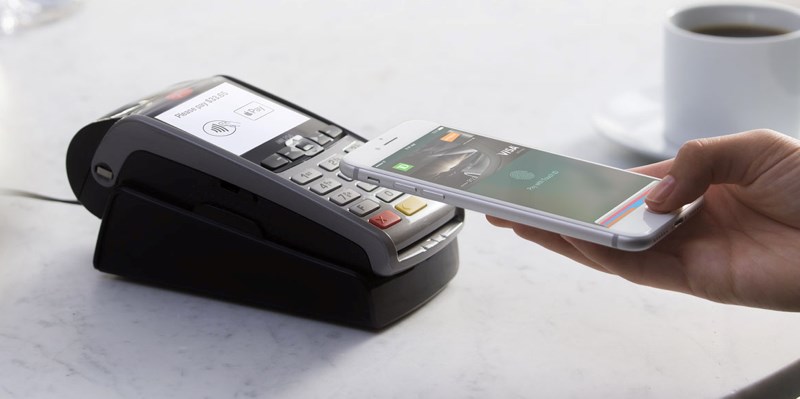After a year of trying to use my iPhone to pay for things, here are some things I’ve discovered.
I set up the iPhone to make payments by linking my credit card to Apple Pay. It was straightforward, though it required scanning of a fingerprint and the downloading of a bank app. I had to log into the bank app using my banking credentials. (There are several of phone-based payment systems, including one on the Android platform.)
I’ve been using Apple Pay for a lark. But I like the extra security because of the need for a fingerprint before a tap transaction goes through.
Apple Pay has worked for me at almost every credit card machine that accepts tapping. Around Greater Victoria, for the places I frequent, roughly 60 per cent accept tapping. In an indication of how tapping is growing, many non-tap machines have handwritten “no tap” notes stuck to them. I’ve also encountered several machines with the tapping symbol or that offer tapping on the screen, but the function didn’t work.
(An aside: There’s a ton of credit card payment machine styles, each one with a slightly different quirk. They can be confusing to use, because there are so many configurations. Plus, there’s the danger of scam machines. With so many legitimate models out there, it’s tough to tell when the machine is a fake.)
At Vancouver’s Lonsdale Quay, I encountered a tap-enabled machine that wouldn’t accept payment via my iPhone, but it did accept a tap from my credit card.
At the Times Colonist book sale, which raises funds for literacy programs, I was a volunteer cashier for two afternoons. I kept a tally of how people paid: one third cash, one third credit card with PIN, one third credit card with tap. There was a grand total of one transaction each afternoon using a smartphone. One of those transactions involved a relative, who I had encouraged to use Apple Pay. No one tapped with a watch, which is also an option. My conclusion: paying with a smartphone in Greater Victoria, more than a year after rollout, is still a novelty. The occasional cashier still looks startled or makes a comment, but I’ve never been prevented from using my phone if tap was available.
Up until last week at Canadian Tire, the transaction was declined everytime I tapped my phone to pay but went through on every second try. It finally worked as it should on my most recent visit, in early July.
There’s a limit on the amount allowed for tapping with a credit card, typically around $100. Out of curiousity — and I warned the cashier first — I tried to pay for a $180 purchase by tapping my phone. It went through, but I had to sign a slip of paper that came out of the credit card machine. I haven’t had the opportunity to do that again. Places that deal in large transactions tend to have machines that don’t allow tapping — like the car repair shop and the insurance agent.
Here’s a 1-2-3 of how a transaction might unfold at a restaurant.
A bill is presented, and I say that I’ll be paying with a credit card. If I’ve never been there before, I ask if the machine accepts tap; I have my credit card on standby in case it doesn’t.
The payment machine is presented to me.
The amount is displayed on the payment machine screen.
I press buttons accepting the amount and add a tip. You can usually skip to the final screen, bypassing the tip option, by pressing OK repeatedly, typically four times.
I tilt my phone and hold its top edge against the payment machine while placing a finger on the phone’s fingerprint reader. I’ve found that touching my phone to the credit card machine increases the likelihood that the transaction will go through quickly, versus just hovering it.
The payment machine chirps. An “approved” message appears on the machine's screen.
Phone-pay works at many vending machines, including ones for B.C. Ferries tickets, movie tickets, and McDonald’s food. It hasn’t worked, despite several tries, at gas station pumps, even though they have the tap symbol.
Major retailers I’ve shopped at in the past three months where tap wasn’t available: Home Depot, Walmart, Fairway Market, Mountain Equipment Co-op. This was not an inconvenience. I just had to pull out my credit card and type in my PIN. Or, gasp, pay in cash.
The fact that paying for things the old fashioned way — with cash or credit card — is pretty easy probably explains why there hasn’t been massive uptake for paying with a phone.
But things could change fast, if what’s happening in China is an indication.
Here’s a New York Times story about how it has suddenly become almost essential in urban China to have a smartphone if you need to pay for anything. Cash is fading fast. The story doesn’t say so, but it seems as if people went from cash to smartphones, without stopping at cards. Having cards, I’m guessing, will slow adoption of paying via smartphone. Two China-based companies have managed to convince huge numbers of urban dwellers to switch from cash to apps on smartphones that are linked to a money source. New York Times: Hardly anyone in urban China is using cash anymore
You can use your smartphone, if it’s properly set up, to pay for public transit fares in some cities, such as London. You tap your phone on the fare-gate reader, instead of using a transit card or a ticket.
- - -
Most popular:
How to travel between Victoria and Vancouver on public transit, 2017 ed.



